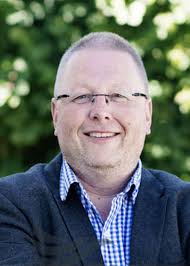Open approach to closed containment

THE focus of salmon farming has shifted from building markets to building new technologies and placating public opinion, an audience in Copenhagen was told this week.
Trond Davidsen, president of the International Salmon Farmers Association (ISFA), said traditional farming in open cages faced challenges both above and below water, with the industry losing the struggle for its reputation in Norway.
While demand for salmon globally is still high and the future of the industry is ‘bright and shiny’, the question now is about how and where the fish will be farmed in the future, said Davidsen at the Marel Salmon Showhow on Wednesday.
The industry in Norway has grown from 98 tonnes in 1971 to 1.2 million tonnes in 2017. But since 2012 there has been little increase in production.
The reasons for this include biological challenges, but also ‘a lack of public support, and opposition is growing’, said Davidsen.
As a result, there has been a shift in strategy. Between 1980 and 2000 the focus was on building and expanding markets, while there was also strong support for the industry from governments and the public.
‘However, from 2000 to today there has been more of a focus on being accepted and being allowed to expand, amid increased criticism from NGOs, the media, governments and the public.’
He said the future would include the evolution of land based salmon farming, and he referred to ambitious plans for land based facilities – for example, the Nordic Seafarms project in Maine and Atlantic Sapphire in Florida.
‘To my knowledge, there are no examples of successful land based salmon farms yet. I am not arguing against it, just stating facts, but it will happen, maybe not tomorrow or 10 years or 15 years from now, but it will happen eventually.’
Land based farms need to achieve a cost level in line or above market price – ‘if not bankruptcy will happen’.
‘We can’t stop the ongoing development in technology and know-how in land based operations. What we can influence is the substantial pressure against open cage salmon farming from NGOs, the public, and also from some politicians and government.’
Davidsen said biological challenges and costs can be reduced when open cage farming is combined with land based RAS production of post-smolt.
While continued opposition to open cage farming can be expected, research and innovation in both open cage and closed containment ‘must continue’.
In Scotland, environmental campaigners told a parliamentary inquiry this week that closed containment was the only way forward for salmon farmers.
John Aitchison of the Friends of the Sound of Jura asked why Scotland wasn’t investing in land based projects such as the pilot programme to farm salmon in a tank in Machrihanish, run by a Norwegian company, ‘that has concluded, I think successfully’.
The only scheme fitting that description was the Niri enterprise that stocked 26,000 juvenile salmon in a 1,600 cubic metre tank in 2016. No fish ever came to market and last autumn the company confirmed the loss of the entire stock.
Picture: Trond Davidsen, president of the International Salmon Farmers Association

